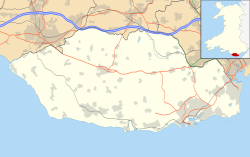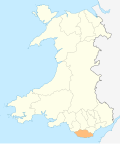Notable landmarks
It contains three listed buildings, Sutton Farmhouse which is Grade II* listed and the "Long Range of Outbuildings to Northwest of Sutton Farmhouse" and "Small Outbuilding immediately to West of Sutton Farmhouse" which are Grade II listed. [5] Nearby is Llandow Industrial Estate and Springfield Nurseries, a major supplier of pot Chrysanthemums to the UK market.
A 5 bedroom mansion in Sutton named The Granary was valued at £730,000 as of August 2011, making it amongst the most expensive properties in the county. [6]
This page is based on this
Wikipedia article Text is available under the
CC BY-SA 4.0 license; additional terms may apply.
Images, videos and audio are available under their respective licenses.


